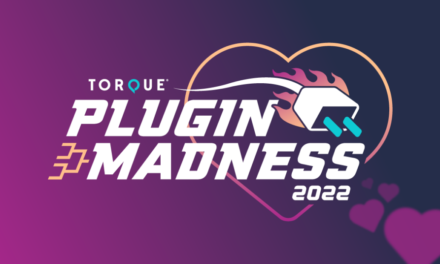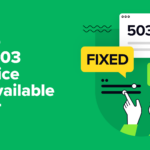Welcome to Press This, the WordPress community podcast from WMR. Each episode features guests from around the community and discussions of the largest issues facing WordPress developers. The following is a transcription of the original recording.
Powered by RedCircle
Doc Pop: You’re listening to Press This, a WordPress community podcast on WMR. Each week we spotlight members of the WordPress community.
I’m your host, Doc Pop. I support the WordPress community through my role at WP Engine and my contributions on TorqueMag.io. You can subscribe to Press This on RedCircle, iTunes, Spotify, or your favorite podcasting app.You can also download episodes directly from WMR.fm.
Today we’re diving deep into a topic that’s not only cutting edge, but also crucial for making the web more inclusive: AI and accessibility and how those two things can work together.
I’m thrilled today to be joined by Amber Hines, the CEO of Equalize Digital, who recently impressed our audiences with her keynote at DE{CODE} 2024 on the potential of AI and making websites more accessible.
In today’s conversation, Amber and I will be exploring those promises and perils and how you can leverage generative AI, large language models, and everything else to enhance accessibility on WordPress websites. Amber, thank you so much for joining us today.
Amber Hinds: Yeah, thanks for having me.
Doc Pop: Let’s start this off with that DE{CODE} talk that happened last week as we’re recording.
And I got a chance to watch the whole thing. I really enjoyed it. I’m just wondering if you can kind of summarize: what is DE{CODE} and what was your talk there?
Amber Hinds: Yeah, so DE{CODE} is of course WP Engine’s developer-focused conference, which is one of the few WordPress conferences that’s fully focused on developers, which is neat.
And I gave almost like a five-minute lightning talk as part of the keynote presentation, which the whole of was about AI. And of course, me being an accessibility advocate, I spoke about AI’s impact on accessibility, good and bad.
Doc Pop: Yeah, and before large language models and generative AI were the hot new thing, there were many tools out there that claimed to easily fix accessibility issues and, in particular in the WordPress space, there was a lot of accessibility overlays or all sorts of tools that claimed to be quick fixes—just download this plugin and you’re all good.
And those were criticized often for not really fixing issues, for just giving the website owners the feeling that maybe they had done something, but not actually fixing things for users. Is AI likely to be the same, or is this going to be different for us?
Amber Hinds: Yeah, so I mean those, the accessibility overlays, you know, I think we almost talked about they’re criticized in the current tense, right? They are currently criticized because they make a lot of really bold claims. And the biggest challenge about accessibility is that not every problem can be detected automatically with an automated testing tool.
And so, if you can’t find all of the problems automatically, how can, you know, something come out and fix it? And that’s sort of what’s leveraged against the overlays.
And I think to some degree, that is a challenge that AI models are having. So, you know, these large language models are trained off of millions of pieces of content—billions of pieces of content on millions of websites around the world.
But the vast majority of websites have, if you look at the WebAIM report, they do a report every year called the WebAIM Million, where they scan the top million websites by—it was Alexa ranking—and check them for easily detectable accessibility errors. And 96 percent of them have easily detectable accessibility errors.
So this becomes a problem because we are training our AI models on inaccessible code and inaccessible content. And, you know, we’ve all probably seen where ChatGPT—what do they call it, hallucination? It makes things up. And, you know, if you don’t give it the exact right prompt, it might give you just something that’s a little bit wrong.
And if you aren’t trained enough to know that, you might not catch it. And so unless you’re really specific, like if you’re using some of these tools like GitHub Copilot to help you code, you could potentially get out of it inaccessible code. For example, it might use divs instead of buttons because a lot of websites use divs instead of buttons. So I think that’s a challenge that we really have to figure out on the AI front.
Doc Pop: In the space we call this garbage in, garbage out. And in the context of AI, I think that’s often associated with when the models are trained on biased or incorrect data, then they’re gonna repeat that data as fact.
And in your presentation you mentioned, you know, Copilot is trained on sites that aren’t necessarily accessible. So if you’re using GitHub Copilot to help you build a site, it’s likely to repeat those errors.
And I just—I was hoping to get an example of one, and you just mentioned one: buttons versus divs. Can you just quickly tell us about, like, why is that different? Why is that important to note?
Amber Hinds: Yeah, so one of the most important things for accessibility is using semantic HTML, which means HTML elements that have meanings in and of themselves that the browsers can interpret and do certain things with.
So, when we talk about buttons on websites, there’s a couple of different kinds of buttons. In WordPress, we have the button block, which adds buttons, but they’re not actually buttons. They’re links that are styled to look like buttons. And then we have elements that control functionality, and these are true buttons.
And so, these are things that might change a slide in a carousel or a slider. Something that might submit a form or something you can click to trigger an accordion to open and close. This would be a button.
And in semantic HTML, we use a literal button tag. So it’s like, you know, the
So you can tab to them with your tab key without using a mouse. You can use both the return or enter key and the space bar to open and close them. Now there are ways that a lot of developers will make things that don’t have semantic meaning.
So something like a div or a span function like a button. So we see this a lot in carousels or accordions where they’ve added JavaScript, which is using an element that is not a button, maybe it’s a heading on an accordion or a div on a carousel, to actually open and close the thing or to move to the next slide.
But because these don’t have the semantic meaning, they can’t be reached with a keyboard and they only function with a mouse.
Doc Pop: Thank you so much for clarifying that. I always learn a lot when I talk with you about this and I appreciate you diving into that.
One more thing I kind of want to talk about that you brought up in terms of cautionary things—and I think later on, we’re going to be talking about maybe some of the things that are working really well—but one of the cautionary things is a lot of these models might have biases in them and if they’re creating alt text, there might be mistakes.
Not even necessarily mistakes based on bias that it has in its training data, but maybe just because it’s missing the context of what the photo is being shared for. And it’s probably important as with, you know, being able to not just generate the code, but actually look at it and understand what it’s doing and if it’s doing best best practices, it’s probably also good if you’re using it to write alt text for images that someone goes through and, and reviews it.
Right? Like everything you’re talking about, it sounds like it comes down to, you can use this, but it’s not going to replace anybody. Someone still needs to double check it.
Amber Hinds: Yeah, alternative text is so interesting. There’s a lot of WordPress plugins out there that are connecting and trying to auto-generate alt text. I did call out one in my talk, alttext.ai, which one thing that they’re doing that is slightly better than some of the other ones is it’ll reference, like, maybe what information you have in your Yoast SEO details, it’ll look at the post title when it’s trying to generate the alt text instead of just sending the image over.
But alt text is so contextual. I have tried a lot of them, including that one, and every time I try them thinking it’ll save me time, I end up being like, “no, it gets it wrong.”
You know, if it’s, if it’s pictures of specific people on my team or even on my personal blog and it’s a picture of my family or something like that, I don’t just want to say “woman,” I want to name myself, right? Like the alt text should say “Amber standing in an office” or something like that.
I’ve tried it on product images. And like t-shirts where there’s literally words on the t-shirts and almost none of them do a good job of saying what the words are on the t-shirt.
And you’re thinking, “well, if somebody wants to buy this and they can’t see it, they have to know what the words on the t-shirt say to decide if they want to wear the t-shirt or not,” right?
So those are pretty challenging, but I feel like there’s some possibility there where it can—there can be some quick advancements and where that can end up helping site owners even if it just gives them a head start and they have to do some editing along the way.
Doc Pop: On that note, we’re going to take a quick break, Amber, so that our sponsors who are probably t-shirt sellers with great text on their t-shirts, so they can get in their messages.
But when we come back, we’ll talk more about some of the tools that you might recommend that are AI-powered, accessibility related. So stay tuned for more after this short break.
Doc Pop: Welcome back to Press This, the WordPress Community Podcast. My name is Doc, and today I’m talking to Amber Hines, the CEO of Equalize Digital about accessibility, WordPress, and AI.
Amber, you’ve been in the space for 15 years—in the accessibility space for 15 years. Are things radically different now that AI is on the scene?
Amber Hinds: Yeah, I think so. I mean there’s, there have been a lot of advancements. I don’t know. Are you a Super Bowl watcher, Doc?
Doc Pop: No.
Amber Hinds: No, okay. So to be honest, I’m not much into football either, but I did see part of the Super Bowl, and there was a commercial, which is definitely worth everyone going and finding, for Google. What they have is what they’re calling “guided vision,” and basically, it was a commercial that was taken from the experience or the perspective of a blind man, or I would say low vision, so not totally blind.
And he was using his camera on his phone to take selfies. And, When he would hold it up, it would tell him how many faces. So if he didn’t hold it in the right angle for himself, you know, it would say like, “no faces in the picture.” And then he could, like, move it and it would say it. But it was very sweet because it goes from one face in the pictures to two faces in the pictures. And then you see what looks like it might be a hospital. And it ends, of course, with three faces in the pictures.
But I do feel like in the last few years, there’s been a lot that AI has been doing, in general, to enhance people’s experience on the web. I know before the break, we were talking about alt text. There’s some stuff where some of the generative language models can do summarizations of things.
So there’s a version of ChatGPT called ChatPDF and you can upload a PDF and it will summarize it for you. Which could be helpful, because a lot of people a lot of people don’t create accessible PDFs, and so being able to upload a PDF and get a text explanation of what it is or what information is contained in it might be really helpful for a screen reader user or maybe someone who has a lower reading level and is having a hard time with, you know, more complex medical knowledge or something more detailed in that PDF, it can explain it to them at a reading level that makes sense for them.
So I do feel like there’s a lot that AI is doing that is positive.
Doc Pop: Have you seen anything specific in WordPress that’s using AI to help increase its accessibility to, like, a specific plugin that users could check out or, or multiple plugins?
Amber Hinds: I haven’t, to be honest. I don’t know if I really have a good WordPress-specific recommendation on the literal AI front. I will say, you know, our Accessibility Checker plugin does some automated testing.
It’s not AI-integrated, but we have some plans for some areas where we are likely going to integrate it with some of the generative AI models that are out there to improve our testing rules. But I don’t know of any good ones that I super recommend people check out, unfortunately. I feel like we’re still in the early days on that.
Doc Pop: Yeah, it’s early days. And that brings me to my next question is: If someone is building that tool or if someone’s building AI onto their website, what are some of the best practices that they should be keeping in mind while they’re moving forward?
Amber Hinds: That’s a great question. I mean, I think in general, no matter what you’re doing, of course, accessibility is really important.
If you’re trying to come up with ideas, though, and you’re trying to think, like, “how can I use AI to enhance accessibility?” I would think less about the toolbars or that sort of thing, but maybe thinking about “is there ways that we can build websites to be smarter to maybe recognize certain things about people’s systems?”
So for example, we can actually detect whether or not someone has their system color mode preference set to dark mode on their operating system. And potentially having the website—obviously there’s CSS where you could just code the website to have dark mode—but there might be certain scenarios where, beyond the CSS coding, you’re actually using AI to change some of the other experiences.
I think you have to be careful about that, because there’s there’s possibilities that it won’t, you know—it could remove, and there’s been a lot of conversations in the accessibility community about this, like recommendations on whether or not we think that it’s a good idea to say, “oh, I can tell someone’s in dark mode,” or ‘I can tell someone’s using a screen reader, I’m going to give them a more simplified version of the website.”
Like, that’s not a great idea, but I think there are some, maybe some creative things people could do. I think having chatbots could be really helpful as a stopgap, assuming the chatbot is well-trained on your content and actually provides decent information.
If you don’t have a really good search or something else about your website is not accessible, having something that allows someone to just ask a question and get an answer back right away, especially if you’re a smaller team and you can’t have a human available to chat with them 24/7—that could potentially do a lot to help with accessibility and getting people where they need to go and getting around issues that you are maybe still working on remediating in your website code itself.
Doc Pop: Yeah, and if you don’t mind, I’m going to toss out some that I think might be important, cause these are just kind of broadly important for anyone using AI, and I imagine it would still be true here.
Transparency: I think if you are—if you do have an AI solution on your site, be transparent with it. Like, you know, as an example, chatbots, let them know that this is, this is a chatbot and not like try to trick them into thinking that…
Amber Hinds: It’s not a human.
Doc Pop: Right, not a human, you know. But just, just be transparent. I mean, in, in a lot of cases, I think that could be like, this text is AI-generated, even if that’s like a text in a post or alt description, or if you’re doing generative image AI—I think that that sort of stuff is always important to just be transparent that this is not done by a human.
And similarly, we’ve got accountability. Accountability in terms of, if you are using AI as part of your solution, like a chatbot again, just acknowledge that if it says something wrong, you’re willing to still back it up or whatever.
Like you’re not giving people bad information or if you are, you’re hopefully saying, “okay, well, our chatbot said this, so I guess we have to give you that discount.”
I just feel like accountability is a thing that some people might miss out when they’re doing AI. Like they just think, “oh, it’s AI. So obviously it’s going to sometimes be wrong and people should just expect that.” But if you’re implementing that tool…
Amber Hinds: Yeah, I actually saw a court case about this very recently where someone—a company’s chatbot told someone that they could get a full refund. And they’re like, “well, our Terms of Service said no,” and the court said “it doesn’t matter. The chatbot is your agent, and they are operating as your business, and therefore, the customer has, you know, has the legitimate expectation that they’re going to get correct information from the chatbot.”
So I do feel like if you’re using these things, you need to really be aware of what the implications might be of using them on your business as a whole.
Doc Pop: Yeah. And then the final thing I was going to mention is just user input.
As always, that’s important to have. Listen to your users, hear how they’re using the experience and how it’s working for them. And I have to say, some folks that I’ve seen rolling out AI are unhappy with how users are interpreting the thing instead of listening to the feedback and being like, “oh, maybe this isn’t doing the right sort of thing that what they want” or something like that.
So those three things, transparency, accountability, and listening to users, that’s important for any business, but I think it’s important for folks who are trying to use these AI tools.
Amber Hinds: I think on that line, like, it’s really important to talk to your real customers, but also don’t forget to include people with disabilities, because they’re,—one in six people worldwide, one in five U.S. adults has a disability.
They’re very frequent users of websites, sometimes even more than we think, and we want to make sure that everything we’re building works for them as well, and not just typically abled people who are using a mouse and a keyboard.
Doc Pop: Absolutely. And on this topic, is there anything outside of the WordPress world in terms of how AI is being used to make sites more inclusive that you’d like to see brought into the WordPress space that you think “this solution works here, we should adopt that.”
Amber Hinds: I do know, and I’ll throw a link so you can put it in the show notes. But I saw in January, Ohio State University, in their news, they were talking about some of the researchers that, at Ohio State, have been working on trying to use AI to create agents that do really complex multi-step processes for people.
So, for example, if I wanted to fly to WordCamp Europe, and we know that there’s really a lot of challenges around booking an airplane ticket, having an agent that could be voice-controlled. So we have very basic, right, like we could say to, “Hey Alexa, order me more laundry detergent.” And she would just go do that, right?
But, but being able to do really complex things where we could say to our agent, “I need to book a trip to Italy in June for WordCamp Europe,” it would know what the dates were, it would go out, it would tell me the fares, then it would say, “okay, yes,” and then it would, you know, fill in all the forms, enter my credit card information and do everything for me automatically.
I think that is something that would be really interesting to see more tools in the WordPress space to try and, like, automate these very complex processes for people.
And to be honest, you’re going to see even typically abled people use them because it’s nice to not have to fill out, you know, you know, eight different steps in order to get your airplane ticket or whatever it might be.
Doc Pop: Well, yeah, as true in the real world, it’s also true on the web that accessibility makes it better for everyone. Not just not just certain groups of people, but we all benefit when the web is more accessible.
On that note, we’re going to take one final break. And when we come back, we’re going to wrap up our conversation with Amber Hines about AI and accessibility.
So stay tuned for more after the short break.
Doc Pop: Welcome back to Press This, the WordPress Community Podcast. We’re wrapping up our conversation with Amber Hines about AI, accessibility, and WordPress.
And as we, I think, established pretty clearly, AI is not a Band Aid. There is no, there is no Band Aid that you can just slap on and fix everything. But there’s a lot of possibilities for things that could be done.
Amber was just talking about, like, the potential of being able to easily book a trip to a WordCamp and have all sorts of stuff just handled for you and make it really smooth. And you know, it’s hard for us—because it’s so early, it’s hard for us to see exactly what AI and WordPress and accessibility, what those are going to mean together.
Hopefully this time next year, we’ll have lots of cool examples, but as we said, it’s not always a Band Aid and it’s important to be able to check for accessibility issues. And I’m sure there’s not one thing that you can just run that just automatically checks every possible issue. But I do know that Amber, you have the Accessibility Checker plugin.
Can you tell us a little bit about that and how that works?
Amber Hinds: Yeah, so our plugin is open source, it has a free version that you can get off of WordPress.org or paid versions, and basically what you can do with it is it will check draft pages even before you’ve published them and or published, already published content, and it will scan them and it will come back to you and say things like, you know, you have a, link that doesn’t have meaningful text.
Let’s say you’ve used the words “click here.” You have images missing, alternative text, you aren’t using headings in the right order, oh you put in a link to an audio file, but you don’t have a transcript, those sorts of things.
So it’ll flag common accessibility problems and put that report right in the WordPress dashboard. And we’re really trying to make it easier for content creators to create more accessible websites and learn accessibility as they use the plugin.
Doc Pop: And where can people find the Accessibility Checker plugin?
Amber Hinds: Yep, so beyond WordPress.org, if you just go to our website, equalizedigital.com, that has all the information about the plugin and you can also download the free version off our website.
Doc Pop: And on that note, where can people find out more about what you’re working on online?
Amber Hinds: Yep, so, outside of equalizedigital.com, you can most commonly find me on Twitter or X, and I am @heyamberhines, I’m occasionally on LinkedIn and Mastodon, but that’s probably the best place to find me.
Doc Pop: Right on. Well, thank you so much for joining us today, Amber. I really appreciate it.
Amber Hinds: Thank you for having me. It’s been fun.
Doc Pop: And thanks to our listeners for listening to Press This, a WordPress community podcast on WMR. Please visit TorqueMag.io to find transcribed versions of these episodes, plus more WordPress news and tutorials.
We’re also in the middle of our Plugin Madness competition, so you can go support your favorite WordPress plugins there.
You can subscribe to press this on RedCircle, iTunes, Spotify, or Overcast—my favorite. You can also download directly from WMR.fm.
I’m your host, Dr. Popular. I support the WordPress community through my role at WP Engine, and I’d love spotlighting members of that community each and every week on Press This.











